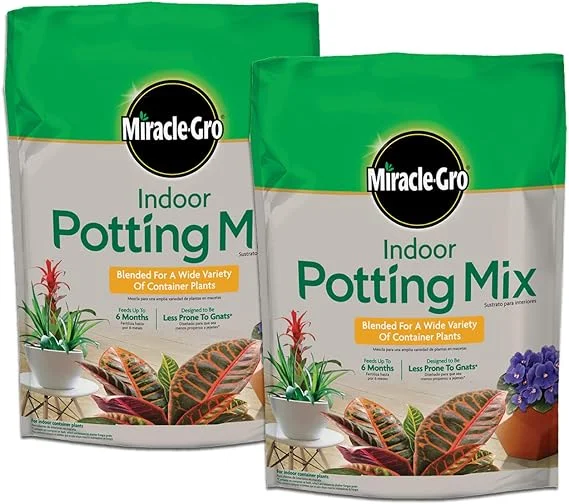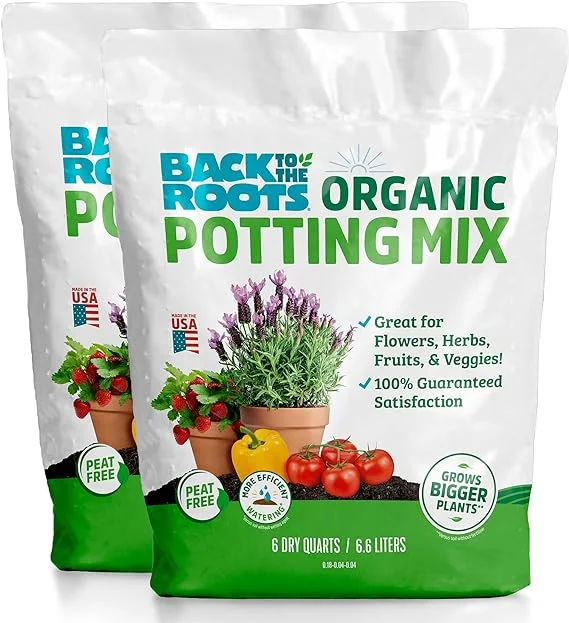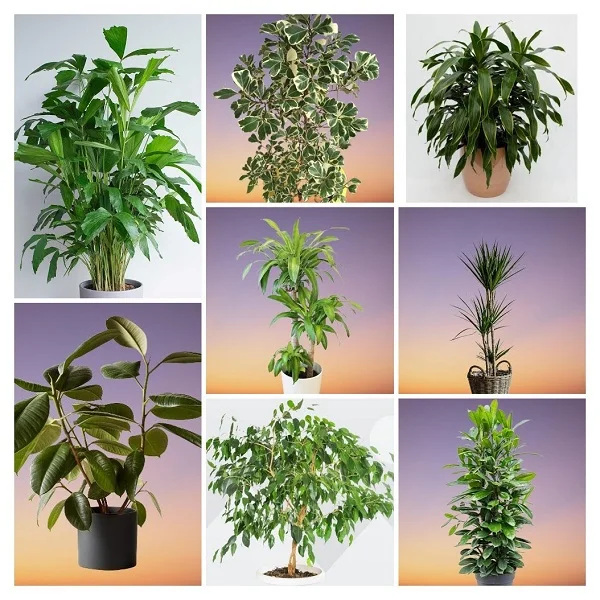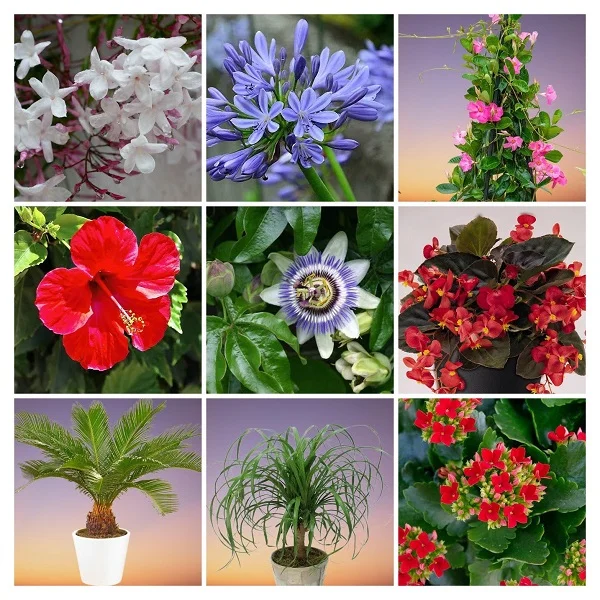Frangipani Plant (Plumeria rubra) Indoor Care, Propagation and Common Problems
Some links in this post may be affiliate links
Plumeria rubra (Frangipani Plant) thrives in bright light with 4-6 hours of sunshine, average warmth, moderate humidity and moderately moist, rich, well-drained soil coupled with monthly feeding in the growing season.
Frangipani Plant also called Red Jasmine or Temple Tree is one of the popular flowering plants grown for its large clusters of flowers borne at the ends of branches.
The flowers are strongly fragrant, giving off their fragrance in the morning and in the evening which is similar to rose, citrus and cinnamon.
The flower colour ranges from common pink to white with shades of yellow in the center of the flower and the fruits are cylindrical pods but are rare when grown indoors.
Red Jasmine requires regular pruning to maintain it small and manageable as it can become unruly if let unpruned.
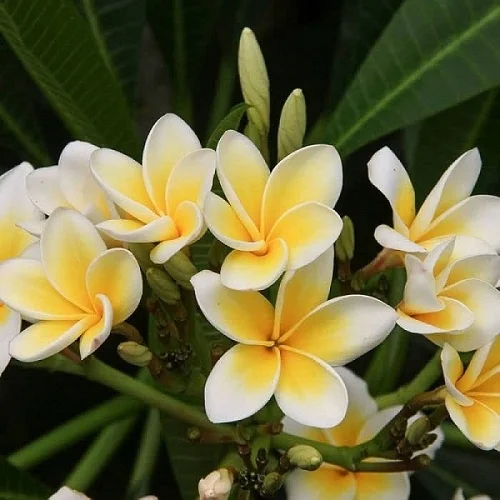
Botanical name: Plumeria rubra
Family: Apocynaceae
Common names: Frangipani, Red Jasmine, Temple Tree
Origin
Plumeria rubra is native range extends from tropical regions of central Mexico, Central America, Columbia and Venezuela and it is cultivated in the tropical regions of the world.
Toxicity
All parts of Plumeria rubra are toxic to both humans and pets. If ingested, it can cause nausea, diarrhea and vomiting. It produces a sap which can cause dermatitis in sensitive skin therefore, always wear gloves when handling this plant and keep out of the reach of children and pets to avoid any mishaps.
Where to Buy
If you are looking to acquire Red Jasmines for your plant collection, they are available online on Etsy (Link to Etsy).
Plumeria rubra Care Indoors
Plumeria rubra (Frangipani Plant) blooms in bright light with 4-6 hours of sunshine, average warmth of 18-270C, humidity of 50-55% and moderately moist, fertile, well-drained, all purpose soil coupled with monthly feeding during the growing season.
Red Jasmine requires repotting only when it becomes pot-bound. Regular pruning is needed to keep it neat, encourage a bushy, compact growth and rejuvenate growth. Keep reading for more on these growing conditions and how to provide them.
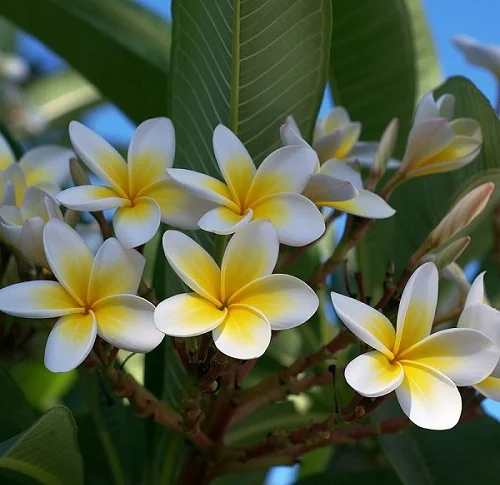
Light Requirements
Frangipani Plant grows best under bright light with at least 4-6 hours of sunshine. However, keep it away from hot midday sunlight to avoid sunscorch on the leaves.
Red Jasmine will not flower if grown under too little light, therefore, consider investing in grow lights if the natural lighting is not enough. Take a look at these full spectrum grow lights on Amazon.
Rotate the pot regularly to ensure that the plant receives light on all sides for uniform growth and prevent lopsided growth.
Watering
Water Frangipani liberally during the growing season and allow the top 2-3 inches of soil to dry out between waterings to maintain the soil moderately moist.
Cut down on watering during the cold season to maintain the soil slightly moist as growth is minimal at this time.
Ensure that the pot has a drainage hole inorder to prevent the soil from getting soggy as it can lead to root-rot and death of the plant.
Temperature and Humidity
Average warmth of 18-270C is ideal for Frangipani Plant. Keep it away from drafts to avoid crispy leaf tips and edges.
Frangipani Plant grows best in humidity of 50-55%. Where the air is too dry, you may elevate humidity by setting the pot on a wet pebble tray or by using a cool mist humidifier.
Clean the leaves by damp-wiping with a soft cloth to get rid of dust and also discourage pest infestations. Make sure that there is good air circulation to reduce occurence of fungal diseases.
Fertilizer
Feed Frangipani Plant with aphosphorous-rich, water-soluble fertilizer every 4 weeks during the growing season to encourage flowering. Stop feeding in the cold season as growth is minimal at this time and feeding at this time can cause fertilizer burn and death of the plant.
Potting Soil
The best soil for Frangipani Plant should be rich in organic matter and free-draining to prevent it from getting soggy while providing the required nutrients. Most all purpose potting mixes are ideal.
Repotting
Repot Frangipani Plant at the beginning of the growing season in a pot one size larger than the current one. Repot only when the plant becomes pot-bound as it blooms best when slightly root-bound.
Make sure that the pot has a drainage hole and the soil is free-draining soil to prevent it from getting soggy to avoid root-rot. The mature plants can be top-dressed by replacing the top 3-4 inches of soil with fresh potting mixture. Check out these Pots with Multi Mesh Drainage Holes on Amazon.
Pruning
Prune Frangipani Plant by removing dead blooms and leaves to maintain the plant neat and also discourage pests and diseases.
Pinch off the growing tips to encourage growth of a bushy and compact plant. Cutback the stems after flowering to 1/3 of their height to encourage new growth and keep the plant compact.
Propagation
Plumeria rubra (Frangipani Plant) propagation can be done at the beginning of the growing season from stem cuttings.
How to propagate Frangipani Plant from stem cuttings
Take stem cuttings of about 4-6 inches from a healthy Frangipani plant while ensuring each cutting has at least 2 leaf nodes.
Dip the lower cut end of the cutting in a rooting hormone to hasten rooting.
Insert the cutting in moist free-draining soil. Cover the set up with clear polythene to create a greenhouse effect in order to promote rooting of the cuttings.
Place the set up in a warm, brightly lit spot away from direct sunlight and allow the new plants to be well established before transplanting.
Gradually remove the polythene sheet over a period of two weeks to aclimatize the new Red Jasmine plants to the ordinary growing conditions.
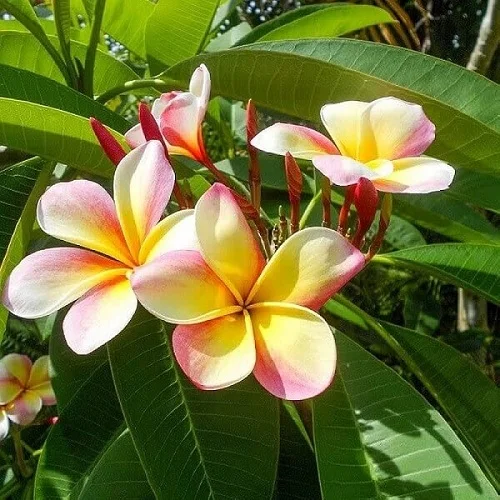
Plumeria rubra Common Problems
Frangipani Plant (Plumeria rubra) growing problems include wilting, lack of blooms, yellow leaves, flowerbud drop, pests and diseases among others. Keep reading for more on these problems, their remedies and solutions.
Pests
The common pests in Frangipani are spider mites, scale insects and aphids. Isolate the affected plant to prevent spread to other plants and treat it for the pests. Learn how to identify and treat pests in houseplants.
Diseases
Frangipani Plant is prone to root-rot and lleaf spot disease which are promoted by soggy soil and overwet growing conditions. Ascertain that the pot has a drainage hole and the soil is free-draining to prevent the soil from getting soggy.
Reduce watering during the cold season to maintain the soil slightly moist as growth is minimal at this time. Ensure also that there is good air circulation to reduce disease infestation.
No blooms
There are three possible reasons why Frangipani Plant will not bloom (flower). One possible reason is too little light. Move the plant to a brighter spot where it will receive bright light with 4-6 hours of direct sunshine or instal a grow light where natural light is insufficient. Check out this guide on understanding light for houseplants.
The second possible reason why Frangipani Plant is not blooming (flowering) is feeding it with a nitrogen-rich fertilizer which promotes foliage growth at the expense of flowers.
Feed the plant with a phosphorous-rich, water-soluble fertilizer every 4 weeks during the growing season to encourage flowering. Withhold feeding in the cold season as growth is minimal at this time. Learn how to feed houseplants.
The third possible reason why Plumeria rubra is not blooming (flowering) is too cold temperatures. Protect the plant from cold drafts from windy doors, drafty windows and air conditioning units to maintain an average room temperature of 18-270C. Check out this guide on understanding temperature for houseplants.
Dropping flower buds
Underwatering is the cause of flower drop in Frangipani Plant. Water the plant thoroughly and maintain the soil moderately moist at all times during the growing season. Water less in the cold season to keep the soil slightly moist as growth is minimal at this time but never allow the soil to dry out completely. Learn more on how to water houseplants correctly.
Yellowing and wilting
Underwatering is the cause of yellowing and wilted leaves in Frangipani Plant. Water the plant thoroughly and maintain the soil moderately moist at all times during the growing season. Decrease watering in the cold season as growth is minimal at this time but do not allow the soil to dry out completely.
Yellowing leaves
Overwatering Frangipani Plant will cause the leaves to start yellowing. Reduce watering in the cold months to maintain the soil slightly moist and ensure the pot has a drainage hole to prevent the soil from getting soggy.
You liked it? Share on social media.
Related Content
Amazon Associates Disclosure
Homeplantsguide.com is a participant in the Amazon Services LLC Associates Program, an affiliate advertising program designed to provide a means for sites to earn advertising fees by advertising and linking to amazon.com.

